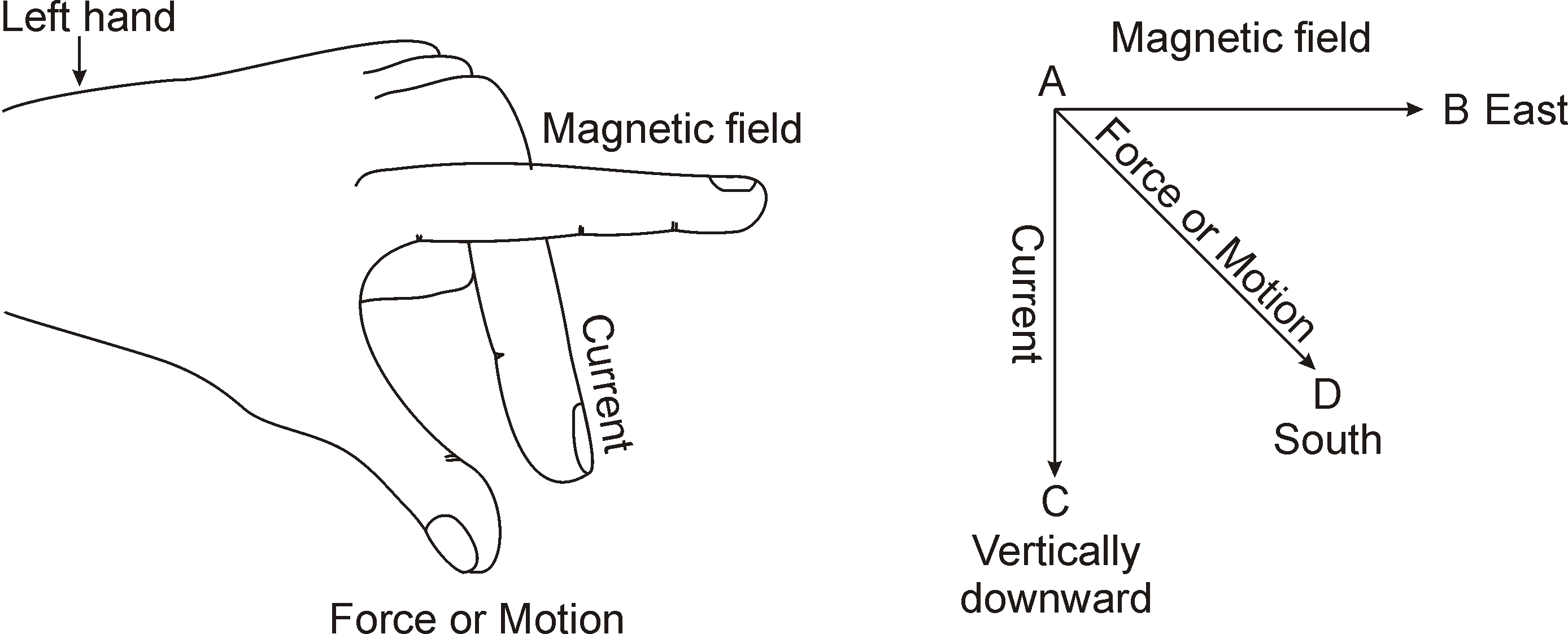
In 1821, Fleming discovered that: When a current-carrying conductor is placed in a magnetic field, a mechanical force is exerted on the conductor which can make the conductor move. This rule is used to determine the direction of motion of conductors in a motor.
The direction of force acting on a current-carrying wire placed in a magnetic field is
(i) Perpendicular to the direction of current, and
(ii) Perpendicular to the direction of magnetic field.
According to this rule if we hold the thumb, the forefinger and the central finger of the left-hand mutually perpendicular to each other and if the forefinger points in the direction of the magnetic field, central finger in the direction of the current, then the thumb points in the direction of motion (or the force) on the conductor.

When a conductor is placed in a magnetic field, current is induced in the conductor. The direction of induced current is determined by the Fleming’s right Hand Rule. It is used to determine the direction of current flowing in a generator.

This rule gives the direction of current induced in a conductor moving perpendicular to a magnetic field. Stretch the thumb, forefinger and the central finger of the right hand mutually perpendicular to each other. If the forefinger points in the direction of the magnetic field, thumb in the direction of motion of the conductor, then the central finger points in the direction of current induced in the conductor.
The following conventions are adopted in applying Fleming’s Left Hand or Right Hand Rule: